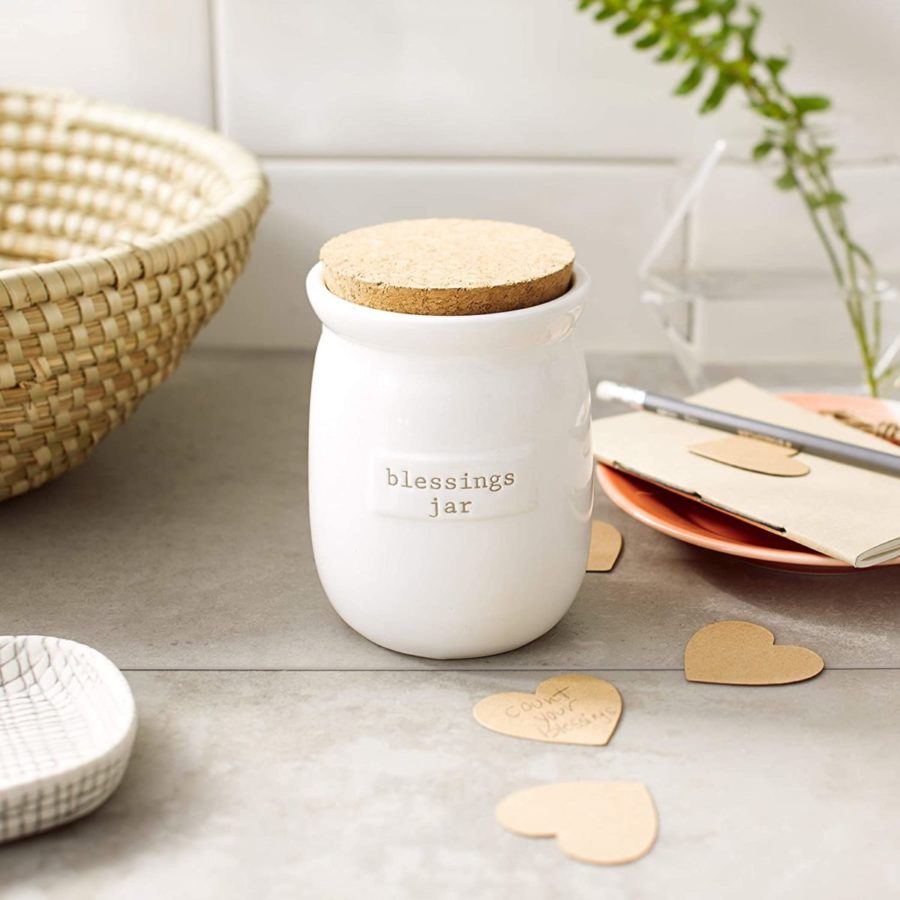
A brilliant man once said, “A person who is not grateful cannot experience greater happiness.” Through the power of gratitude, you are able to communicate your appreciation to family, friends, co-workers, even strangers. Gratitude is a powerful feeling of positive abundance. It motivates. The lack of gratitude gives you a feeling of deprivation. It fatigues you. Cultivating an attitude of gratitude shapes your outlook on life, helping you focus on the positive and fostering a healthier mindset. Gratitude is associated with greater happiness because it is an uplifting positive emotion. Scientific research supports that gratitude can lead to improved well-being and positive changes in the brain. And, it will help you deal with adversity. I speak from personal experience because I know the physical and emotional feeling of gratitude. Gratitude also influences your emotions, helping to regulate mood and promote emotional well-being.
Darling, the positive state of gratitude is overpowering. The experience of feeling grateful can boost happiness and strengthen your relationships.
Young People and How to Teach Gratitude
You and I don’t want our children and grandchildren to go through life ungrateful. What a loss for them. What a loss for society. In my opinion, young people today don’t seem to care about the feelings of others. They only have empathy for themselves. They are wrapped up in their personal goals, opinions, and needs. And, they can’t see the forest from the trees. They think they know all. They feel they are entitled and many see accumulating ‘things’ as their key to happiness. As well, they don’t realize that investing in only their emotional and material needs will eventually come at a great cost. Teaching gratitude to a child is essential, as it means helping them understand the value of thankfulness and how it can positively shape their happiness and resilience.
For those of us over the age of 50 — mothers, grandmothers, and aunties — we sit in the driver’s seat to express to our children and grandchildren, nieces, and nephews that they can catch happiness if they pursue a life of gratitude. Adults can lead by example, showing children what it looks like to practice gratitude in daily life and guiding them through teaching and supportive routines. Teach them that life is not all about them; it is about reaching out to others to bring them joy and appreciating the gift of family and life itself. Gratitude in education and teaching environments can foster success and well-being for students, creating a positive atmosphere that benefits everyone involved.
It Is Never Too Late for Mental Health Benefits
Most of our generation grew up differently. Our mothers were home and raised us. Dinner was a family affair. Hugs and kisses, good teachers, and simplicity were abundant. We listened to our parents. We had no other choice. They were our parents. Today parents listen to their children!
I am not old fashion. Trust me. I remember when my daughter’s high school friend was growing marijuana on our roof in Honolulu and I laughed. My late husband did not find it amusing. Today, I am just as lighthearted and fun.
It is never too late for you to step into the picture and give your children and grandchildren the important reality check that counting one’s blessings is as important as anything you do in your life. Developing gratitude as a habit takes effort at first, but it becomes easier with time. Consistent practice is key—try to practice gratitude daily by reflecting on what you are thankful for, writing in a gratitude journal, or sharing appreciation with others. Making the effort to practice gratitude can help reduce stress and worry, especially during challenging times, and supports better emotional well-being.
Ways to Achieve This by Practicing Gratitude
There are a few ways you can achieve this. One way is to lay your cards on the table and let them know how their behavior is making you feel. Tell them stories of doing for others that have brought you the feeling of uplifting happiness. Tell them stories of how other’s kind ways made you feel an outpouring of gratitude for their thoughtfulness. Lastly, with them in tow, give them a writing pad and a pen to write the following:
Ask them to write one item about their family that is positive. Write one thing that is going well at work, at home, your looks, your talent, your friends, and one small thing in your day that made you happy. Encourage them to focus on acknowledging and recognizing these positive aspects as they write, as this step is essential in cultivating gratitude. Then ask them to read out loud to you their answers (if they are comfortable sharing.) Finally, ask them to pause and simply be grateful. This little test may enlighten them to think about gratitude. Engaging in such gratitude practices can create a significant moment of realization, deepening their appreciation and emotional well-being.
There are other ways to foster gratitude, such as group discussions, gratitude journals, or daily reflection activities, which can further support a positive mindset.
Purchase what I call a ‘Happiness Jar‘ or a ‘Blessings Jar‘ for each of your grandchildren and write a story of your personal experience. Teach them the importance of valuing people and not things. Gratitude plays a key role in building relationships and fostering hope, helping to create a positive and supportive environment. Tell them we know they are ‘busy’ pursuing their dreams but they should never be too busy to forget the importance of being kind and empathic to others. And make them this promise, that if they count their blessings every day in some way they will live a charmed life.
Gratitude can also help manage physical pain and is more important for happiness than simply achieving a job or career. Too many young people and older adults, for that matter, talk the talk but don’t walk the walk. One or several life experiences is always the best teacher. Therefore, I don’t think the feeling of gratitude can be felt. That is until you have an experience that gives you a marvelous feeling towards another person for what they have said or done on your behalf or the joy you feel for doing something for another.
As a meaningful activity, prepare a letter expressing your gratitude to someone who has made a difference in your life. Then and only then can you absorb the meaning of the inner joy gratitude brings
Building Stronger Relationships Through Gratitude
Practicing gratitude is one of the most powerful ways to nurture and strengthen the relationships in our lives. Whether at home with family, in the classroom with students, or out in the community, expressing gratitude helps us create a positive environment filled with kindness, empathy, and genuine connection. When we take the time to acknowledge and appreciate the good things others bring into our lives, we not only uplift them, but we also invite greater happiness and a deeper sense of belonging into our own hearts.
For families, making gratitude a daily routine can be as simple as sharing what you’re thankful for around the dinner table or starting a gratitude journal together. Writing down the positive aspects of your day, no matter how small, helps everyone focus on the good things that happened and builds a habit of appreciation. A gratitude jar is another wonderful way to bring gratitude into your home—just jot down moments of thankfulness on slips of paper and add them to the jar. Over time, reading these notes together can remind your family of the joy and kindness that fill your lives.
In the classroom, teachers and educators can teach gratitude by encouraging students to reflect on what they appreciate about their classmates, their school, or even themselves. Creating a gratitude wall, where students write and display notes of thankfulness, fosters a sense of community and helps kids learn to recognize the good in each other. Activities like a gratitude chain—where each link represents something a student is grateful for—can turn gratitude into a fun, visual lesson that grows day by day.
Practicing gratitude isn’t just for children; it’s a lifelong habit that benefits our mental health and strengthens our relationships at every age. Writing letters or sending cards to friends, teachers, or family members to express appreciation can deepen connections and spread joy. Even small acts, like a heartfelt thank you or a kind word, can have a lasting impact on someone’s day.
By making gratitude a regular part of our daily lives, we create a ripple effect of positivity that touches everyone around us. Whether you’re a parent, a teacher, or simply someone who wants to feel more connected and happy, practicing gratitude can transform your mindset and your relationships. Let’s encourage one another to focus on the good things, express our appreciation, and build a world where kindness and thankfulness are at the heart of every relationship.
Never Take a Blessing for Granted
I don’t know the mechanics by which you begin to acknowledge your blessings, but I do recall the first time I felt empathy for another person and helped her. I was in the second grade. That moment was significant because it showed me the power of gratitude and connection. And, I do recall how happy I made her and I vividly remember to this day how happy I felt.
I never take a blessing for granted. Actually, I never take anything for granted. What gratitude means to me is recognizing and appreciating every act of kindness, big or small, and understanding how it shapes my outlook on life. When I am granted anything large or small I am forever grateful. This is a lesson I want to leave my children and grandchildren in their heads, so they too can feel happy and resilient through gratitude.

If you enjoyed this article, please subscribe. Each daily story will be delivered straight to your inbox.



So so very true. I have a GRATITUDE plaque hanging in my living room and a pillow that says THANKFUL AND BLESSED. It is hard during this time to feel Grateful but during times like this it is most important. My morning meditation was on SPIRITUAL ABUNDANCE. Also stressing all the good we have, find good in others, and be Happy for ourselves and others. Starting with just one person it can change the world. Thank you for your blog. Love reading it every day, look forward to it. You are so blessed. Thank you. Carolyn
I love the word you used: abundance. What a special word. Thank you for sharing your thoughts with me. They are very calming and thought provoking. And, thank you for reading my musings. Warmly, Honey
I’ve always tried to teach my children through being a good example myself. I’m not always successful at getting the lesson across or of even being a good example. But I consistently try! But , during these months of Covid isolation, I have realized that it is not only our younger people who need some lessons in gratitude. Several times I’ve heard people say how bored abs lonely they feel. I understand that. I get bored and lonely, too, sometimes but not often. I do something about it! I pick up the phone to call someone or send a note or card to someone. If I’m feeling bored or lonely, maybe they are, too, and I can brighten their day a little. When I’ve suggested writing , a few people have said to me, well, no one ever writes back. And that’s where the problem lies. We shouldn’t reach out with an expectation. Just reaching out in love and generosity could be enough.
I agree with you. We write because it makes us feel good.And, when we get a return it is frosting on the cake!
I love every word you wrote. And, I agree with every word you wrote. Thank you. Warmly, Honey
Researchers tracked down that most guardians remained zeroed in on how kids deal with show appreciation. While 85% of guardians said they incited their children to say “thank you,” just 39% urged youngsters to show appreciation in a manner that went past great habits.
You cannot teach a person to be grateful. I think you have to show them by your actions. Writing a thank you note is an example. Warmly, Honey